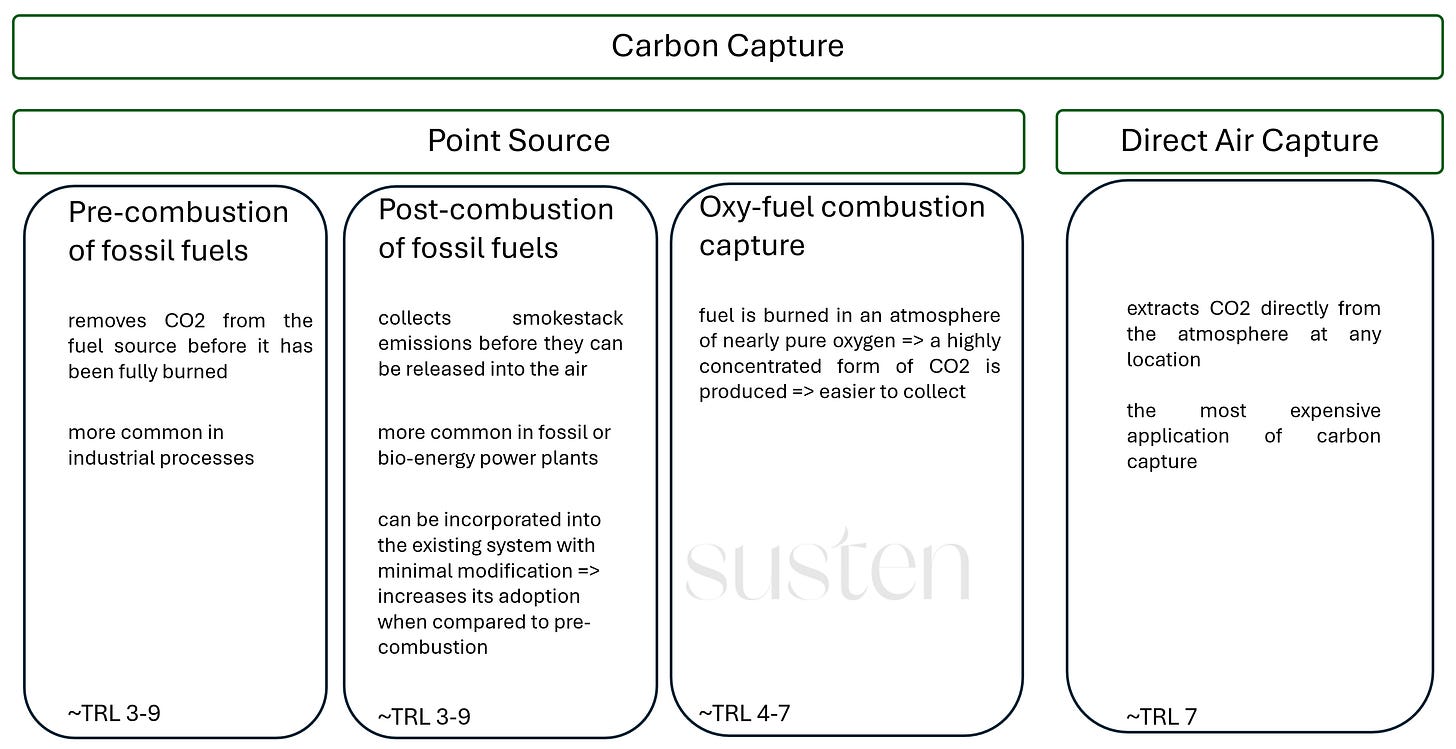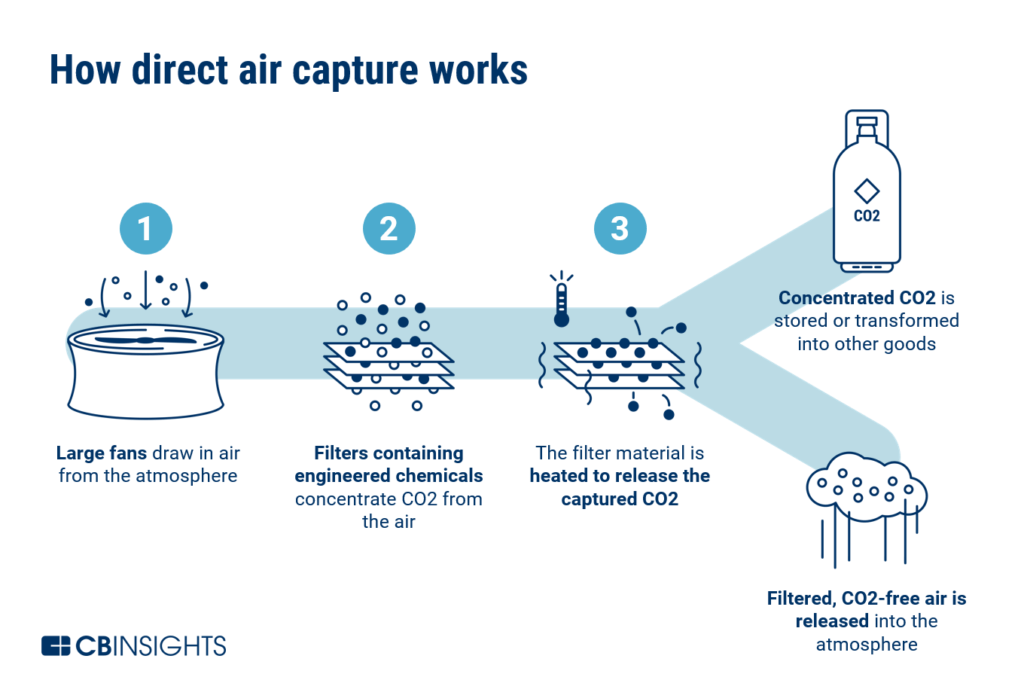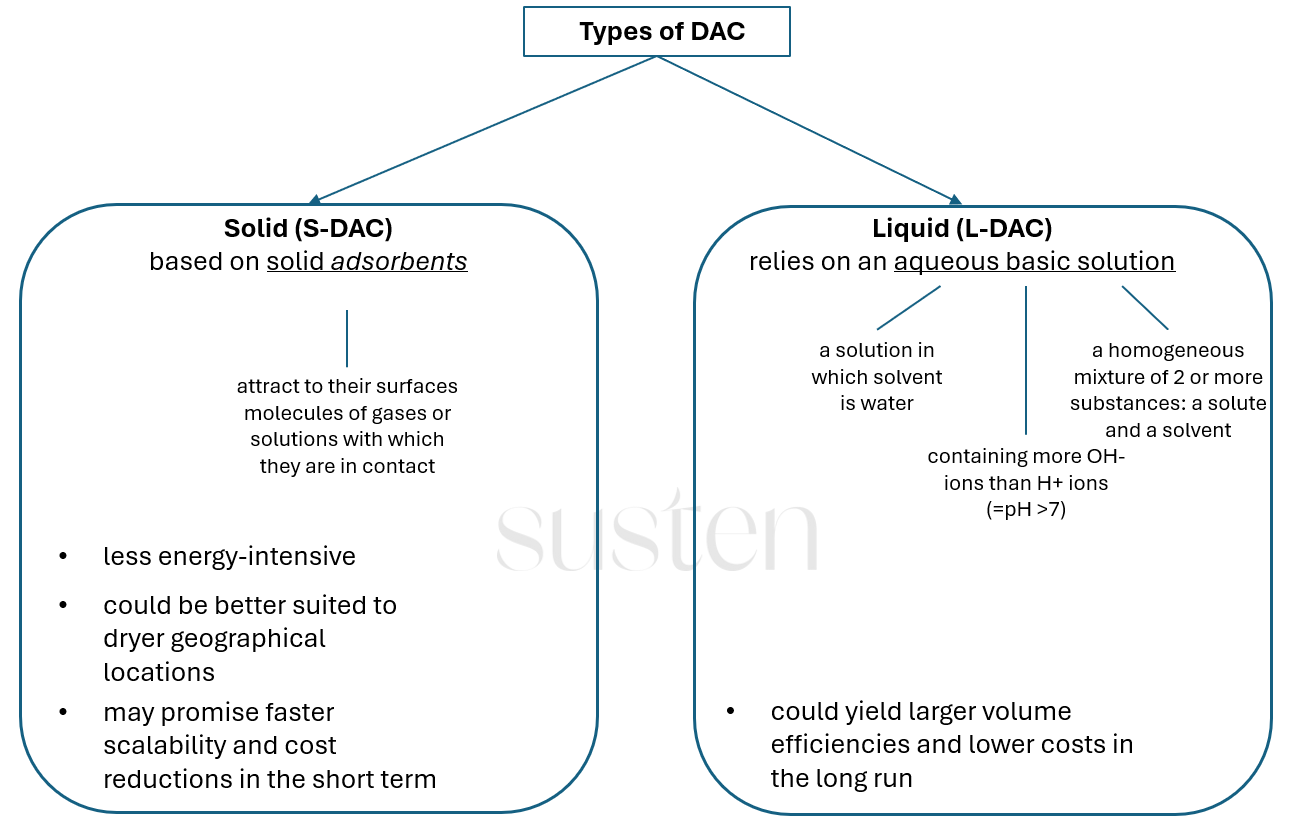Did you know that current carbon capture systems can reduce industrial CO2 emissions by over 90%? And that there are technologies allowing to remove carbon already present in the atmosphere?
There are two primary methods for capturing carbon:
Direct Air Capture (DAC): This method extracts carbon directly from the atmosphere after it has been released.
Point Source Carbon Capture (CC): This method installs carbon capture units directly on the exhaust pipes of factories and power plants, capturing CO2 before it is released out.
In this post, we'll explore the stages at which carbon can be captured and delve into why Direct Air Capture, despite its high costs, has become the most popular method so far.
The Popularity of Direct Air Capture
Although scientifically Point Source CC technologies seem more justified, our research indicates a high interest in DAC technologies and incredible number of startups emerging in this field. This trend is surprising given the cost disparity: DAC ranges from $300-500 per ton of CO2, compared to $40-150 per ton for Point Source capture.

Technology Readiness Levels (TRL) are a way of measuring technology readiness. EU definitions of these levels are:
Point source carbon capture methods could be more efficient due to:
The concentration of CO2 in exhaust gases from factories and power plants being much higher than in the air.
Companies having economic incentives to install Point Source, to avoid emission penalties.
Despite these advantages, a lot of DAC projects are emerging. Here are our thoughts on why this is the case:
Regulatory Incentives: For example, the IRA 45Q tax credits in the US offer $180 per ton of CO2 captured (which is attractive with the threshold of $100/t CO2 to reach)
Achieving Net Zero: Net zero can't be achieved without removing historical CO2, which DAC does, unlike Point Source methods.
Energy Requirements: The main constraint for DAC has been the high energy requirements (and consequently, the cost). However, with periodic cheap energy from renewables, is this really a problem?
Plant Efficiency: Point Source methods can sometimes decrease the efficiency of the plant.
Carbon Credits and Storage vs Utilization: The main aim of Point Source methods is to get carbon credits for carbon capture. The most viable option is to store CO2 underground, as it is easier to prove permanent removal via storage rather than utilization. DAC companies, having no obligation to fight emissions, can use CO2 for utilization and sell it on the market. Sometimes, the utilization price for CO2 can be higher than the DAC cost (e.g., food grade CO2 prices can reach €500 per ton).
Land Requirements: Point Source methods impose land requirements in terms of how much m2 can plant provide for additional installation; DAC being installed in remote areas do not specifically have limits in terms of land footprint.
Cost Estimates for DAC: Big players in DAC (like Climeworks and Carbon Engineering) have excessively high costs, but we estimate that costs below $100 per ton can be reached.
Direct Air Capture: An Overview
Direct Air Capture basically extracts outdoor air, which has lower CO2 levels than industrial exhaust, and then cleans it.

Current Cost and Future Potential
The current cost of DAC is primarily determined by the energy source.

DAC is the most expensive carbon capture method but with great development potential.
27 DAC plants have been commissioned to date worldwide
capturing almost 10,000 tCO2/year
costs ~$4m/year
at least 130 new DAC plants are in the pipeline
if all are realized, by 2030 DAC capture capacity will equal to 75 MtCO2/year
they would cost ~$30b/year
to be economically viable the cost should be lower than ~$7.5b/year
Currently, the companies announced near-term targets range between $200-300/t CO2. DAC technology needs to achieve a cost of $100/t CO2 to be economically viable though. Reducing costs will transform Direct Air Capture from a promising technology into an economically viable solution for large-scale carbon removal, bringing us closer to reaching Net Zero.
In our next post we will look further into Point Source tech and explore various methods of Point Source carbon capture. As always, we welcome your comments and thoughts.
If you missed our previous post regarding the drivers behind the development in this space, you can read it here.



